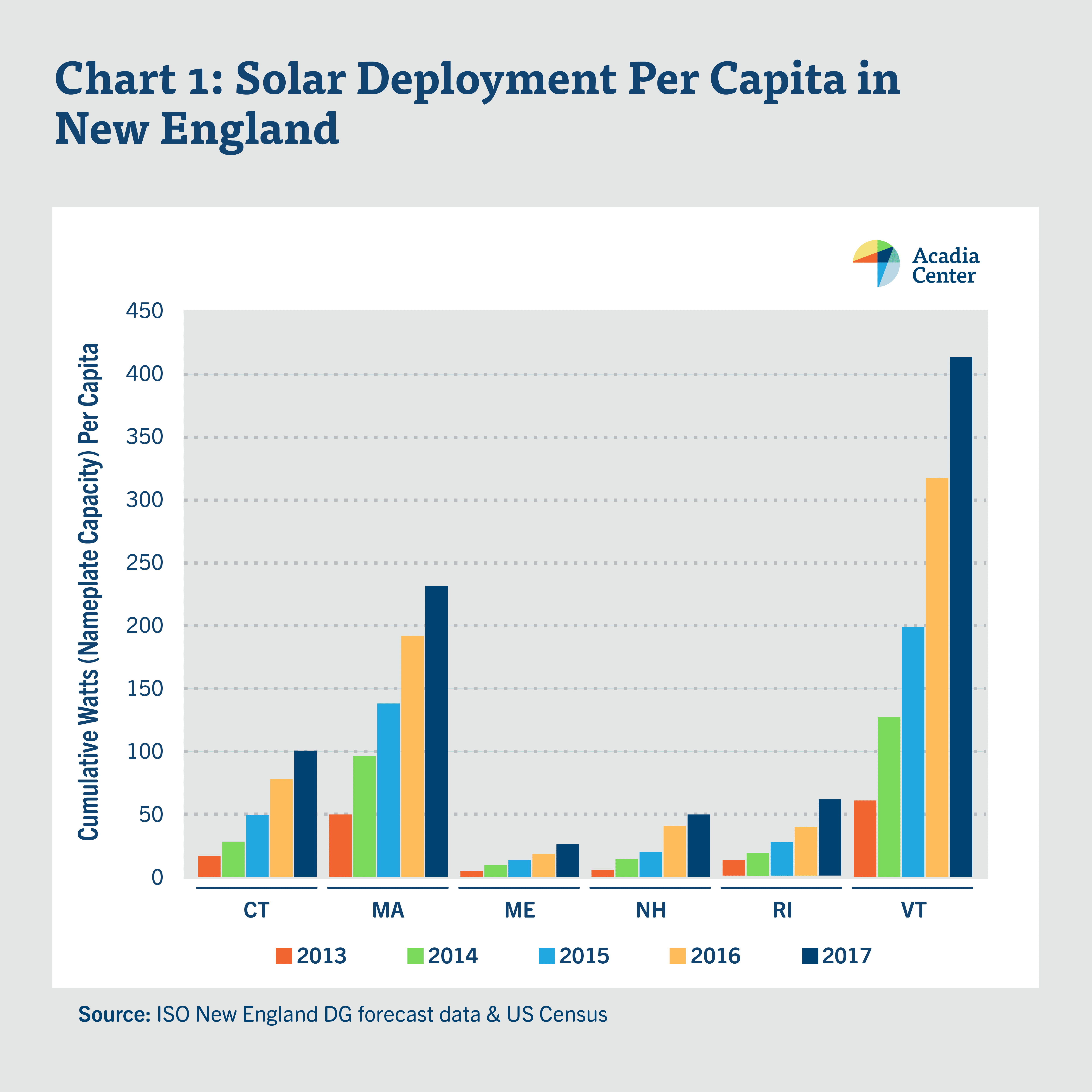Maine faces a “brand-new day,” Gov. Janet Mills announced in her inaugural address, a time to tackle outstanding work – like limiting the climate change that is “threatening our jobs, damaging our health and attacking our historic relationship to the land and sea.”
Recent national and United Nations reports confirm that catastrophic climate upheaval awaits if greenhouse gas emissions remain high.
To slash its carbon emissions, Maine needs to see itself as the renewable energy powerhouse it is. Our state ranks first in renewable energy production, and leads New England states in wind generation.
The fastest-growing sources of electricity generation in the coming two years will be solar and wind, a federal report projects, as prices keep dropping and new projects come online.
These power sources are gaining ground wherever they’re allowed to take hold. In a vivid example of “what’s possible when you infuse a can-do spirit with policy,” Massachusetts has “blown past” goals once thought unrealistic, says John Rogers, a senior energy analyst with the Union of Concerned Scientists, a nonprofit science advocacy organization. Massachusetts now has nearly six times more solar power installed per person than Maine, according to the Acadia Center, a nonprofit promoting clean-energy efforts (see chart).
As states to the south demand more renewable power, Maine could supply some of that from increased solar and wind generation. According to a 2010 report by the nonprofit Institute for Local Self-Reliance, Maine could generate more than 500 percent of its current electricity sales (compared to just 50 percent in Massachusetts) from renewable sources.
Yet fossil fuels for home heating and transportation still dominate energy use here, spewing out greenhouse gases, heightening our vulnerability to price spikes and shortages, and costing Maine residents — on average — nearly $4,000 a year (more per capita than in 41 other states).
Our paradoxical plight hits home when Rogers shares what should be a truism: “Maine knows how to make electricity; it doesn’t know how to make oil at all.”
Despite priding ourselves on self-reliance, we’ve grown dependent on polluting fuels from afar. How could Maine play to its strengths in renewable production, gaining energy independence, economic vitality and a healthier environment?

A critical first step, many experts agree, is to liberate the solar market here by restoring net metering and expanding the number of meters and participants allowed in community solar arrays. These projects could represent half of all distributed solar power in the United States by 2030, according to the National Renewable Energy Laboratory.
Larger community solar installations offer the benefits of local power generation to those who rent, those who can’t afford their own panels and those who lack appropriate sites or structures (such as mobile homes, which can’t generally support the weight of panels).
In Colorado, which mandates that low-income residents have access to 5 percent of electricity from community solar installations, low-income subscribers in a demonstration project were able to save 15 percent to 50 percent on their electricity bills.
Melanie Santiago-Mosier of Vote Solar, a national nonprofit working to expand solar access, sees further potential in on-bill tariffs in which utilities finance on-site energy upgrades and customers pay a fixed monthly charge lower than their previous bill – made possible because of the energy savings. This approach is “working well for energy efficiency at rural electric cooperatives across the country,” she says; “I’m pretty excited about the potential for solar.”
Solar and wind also could fuel changes in the transportation sector, which generates more than half of our state’s carbon emissions. Maine could help finance some of the electrification, both of vehicles and public transit, by joining a new regional collaboration, the Transportation and Climate Initiative, which is planning a system of capping greenhouse gas emissions and auctioning allowances [OU3] similar to what the Regional Greenhouse Gas Initiative (RGGI) has done for electricity generation since 2009.
The proposed system “would be equally successful (to RGGI) if designed well,” predicts Rep. Seth Berry (D-Bowdoinham), who chairs Maine’s Energy, Utilities and Technology Committee. Since 2008, carbon emissions have fallen 40 percent among participating states while generating nearly $3 billion for them to use toward renewable energy and efficiency investments. The Acadia Center projects that a transportation-based “cap and invest” system could generate more than $1 billion in additional revenues for Maine by 2030.
To stimulate purchase of electric vehicles and hybrids, former state Sen. Tom Saviello (R-Franklin County) hopes Maine will consider a vehicle buyback program. And expanding Maine’s network of charging stations would promote EV use, adds Dylan Voorhees, climate and clean energy director at the Natural Resources Council of Maine. But that step and the electrification of public transit will require “the Maine Department of Transportation to start shifting the framework for planning,” he says.
With greater reliance on electricity in both transportation and heating, Voorhees says Maine will need to ramp up energy-efficiency efforts and work toward a “vastly more dynamic and decentralized system” that can accommodate the more “distributed” nature of solar-power generation and storage.
The state also needs better consumer guidance — such as a website on renewable power choices within the state, suggests Sharon Klein, an associate professor of energy economics at the University of Maine. Her research demonstrates that grassroots efforts, such as “solarize” group-purchasing programs, can prompt adoption of new behaviors. “It’s pretty clear,” she says, “we need to get people engaged in community-level projects.”
A Climate to Thrive is a nonprofit local group doing just that, working to make Mount Desert Island energy independent by 2030. Since January 2017, ACTT has tripled the island’s solar-generating capacity – alongside efforts to weatherize homes, reduce plastic waste and promote local foods and ridesharing.
Now, working with a broader coalition, it’s bringing that vision for energy independence to Augusta. What ACTT is learning about the power of a comprehensive approach and ambitious timeline holds important lessons for the state, says its board chair Gary Friedmann: “Everything is up for re-evaluation when you have a bold vision.”







